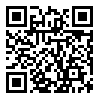<>
Volume 6, Issue 3 (8-2023)
JSAL 2023, 6(3): 135-159 |
Back to browse issues page
Download citation:
BibTeX | RIS | EndNote | Medlars | ProCite | Reference Manager | RefWorks
Send citation to:



BibTeX | RIS | EndNote | Medlars | ProCite | Reference Manager | RefWorks
Send citation to:
Zarei S, Azamzadeh M. (2023). The realization of the Visual Religious Symbols in the Vernacular Ceiling Paintings Motifs of Mazandaran [In Persian]. JSAL. 6(3), 135-159. doi:10.61186/jsal.6.3.135
URL: http://jsal.ierf.ir/article-1-96-en.html
URL: http://jsal.ierf.ir/article-1-96-en.html
1- M.Sc. Student of Art Research, college of Art and Architecture, University of Mazandaran
2- Assistant Professor, Group of Handicraft and Art Research, college of Art and Architecture, Mazandaran University ,a.azamzadeh@yahoo.com
2- Assistant Professor, Group of Handicraft and Art Research, college of Art and Architecture, Mazandaran University ,
Abstract: (2851 Views)
Mazandaran is the origin of Alevi Shiite and contains Islamic valuable buildings. The paintings of the ceilings are a kind of indigenous and religious architecture of the North Mazandaran, most of which are illustrated in the Qajar period. Drawings that originated from the artist's imagination, adapted from religious books and Quran, are the cultural and social life of the artist at his time. In other words, the themes such as plant, epic and mythological motifs, and geometrical and religious motifs are seen. The color is generated by the means of taking the light by the eye and it has emerged through the radiation and reflection of the light against the eye of the spectator. Meanwhile, color is a visual element that is used as an element or a metaphorical symbol in art. Many artists are using colors fit with the concept, which is due to transferring through their artistic work to the audiences. Application of the color at the ceiling paintings is restricted and many ceiling paintings missed their color quality and drawing during the time. The colors are reconstructed in some of them including Fulad Kola at Babolsar and "Ahangar Kola" at Ghaemshahr. We studied how the religious visual signs are realized in the development of Mazandaran's vernacular ceiling paintings. This study aims to access the hidden and visible themes of these symbols and the paintings and study how much the people of Mazandaran tend to them in this era. It seems that these two arts, given their common content roots, benefit from common verbal elements too. These arts, aligned and influenced by each other, are an appropriate manifestation to draw the faith and religious beliefs of the people by the artists who are not generally trained and originated from society. The colors in the Quran and Nahj al Balagheh are in the form of the color name itself and their conceptual expression is mostly in yellow, white, black, green, red, and blue colors. Sometimes, the combination of two colors is seen. Of passing the light to darkness and passing the green to yellow color, the concept's replacement and change in the human spirits and actions, come to mind
Type of Study: Research |
Subject:
Sociolinguistics
Received: 2022/08/1 | Accepted: 2023/04/4 | Published: 2023/07/30
Received: 2022/08/1 | Accepted: 2023/04/4 | Published: 2023/07/30
References
1. Iten, J., (2003), Color, translator: Mohammad Hossein Halimi, 7th edition, Tehran: Ministry of Culture and Islamic Guidance. [In Persian]
2. Pazeshpour, M., Motamedi, E., (2004), Geometrical Light Science, 3th edition, Tehran: Fatemi Cultural Institute. [In Persian]
3. Hijazi, A., (2010), "The Seven Skies of the Qur'an and the Seven Colors of the Sky in All the Nahjul-Balaghe of Amir Momenan (AS)", Islamic Research Journal, Faculty of Literature and Humanities, Shahid Bahonar University, Kerman, Vol. 3, No. 5, pp. 54-85.
4. Pahlavan, H., (2007), "Psychology of Colors in Quran and Hadith", Hadith Andisheh, No. 6, pp. 122-133.
5. Jafar Nejad, S., (2001), Survey of old paintings in Takaya and Saqanfars of Mazandaran, Master's thesis, Tehran: Islamic Azad University, Central Tehran branch. [In Persian]
6. Zirak Jeddi, Somia (2013), Adaptation of visual and pictorial symbols of Ta'ziyeh in coffeehouse painting, Master's thesis, Islamic Azad University, Central Tehran branch. [In Persian]
7. Shojaei, H., (2016), Comparative symbology of colors, numbers, shapes, letters, directions, 1th edition, Tehran: Shahr Pedram Publishing House. [In Persian]
8. Shafi'i Kadkani, M., (2011), Images of Imagination in Persian Poetry, 15th edition, Tehran: Aga Publishing. [In Persian]
9. Shamisa, S., (2002), Bayan, 9th edition, Tehran: Ferdous Publications. [In Persian]
10. Fatuhi Roudmajni, M., (2010), The Rhetoric of Image, 2th Edition, Tehran: Sokhon Publications. [In Persian]
11. Qaraati, M., (1999), Tafsir Noor, 2th edition, Tehran: Cultural Center of Lessons from the Qur'an. [In Persian]
12. Motahari, M., (2018), Seiri in Nahj al-Balaghe, Tehran: Sadra Publisher. [In Persian]
13. Makarem Shirazi, N., (2008), Tafsir al-Nemone, 36th edition, Tehran: Darul Kitab al-Islamiya publisher. [In Persian]
14. Mohaddesi, J., (1986), Art in the realm of school, 1th edition, Tehran, Islamic Revolutionary Guard Corps Publications. [In Persian]
15. Marie Schimel, A., Sasek. P., (2012), "The Values of Color in Iranian Art and Literature", translator: Maryam Mirahmadi, Anjuman Quarterly, No. 12, pp. 41-58.
16. Norouzi, Z., Mokhtari, F., (2012), "Analysis of Haft Gonbad Nezami based on elements of visual arts", Persian Literature and Language Research, No. 26, pp. 52-69.
Send email to the article author
| Rights and permissions | |
 |
This work is licensed under a Creative Commons Attribution-NonCommercial 4.0 International License. |








